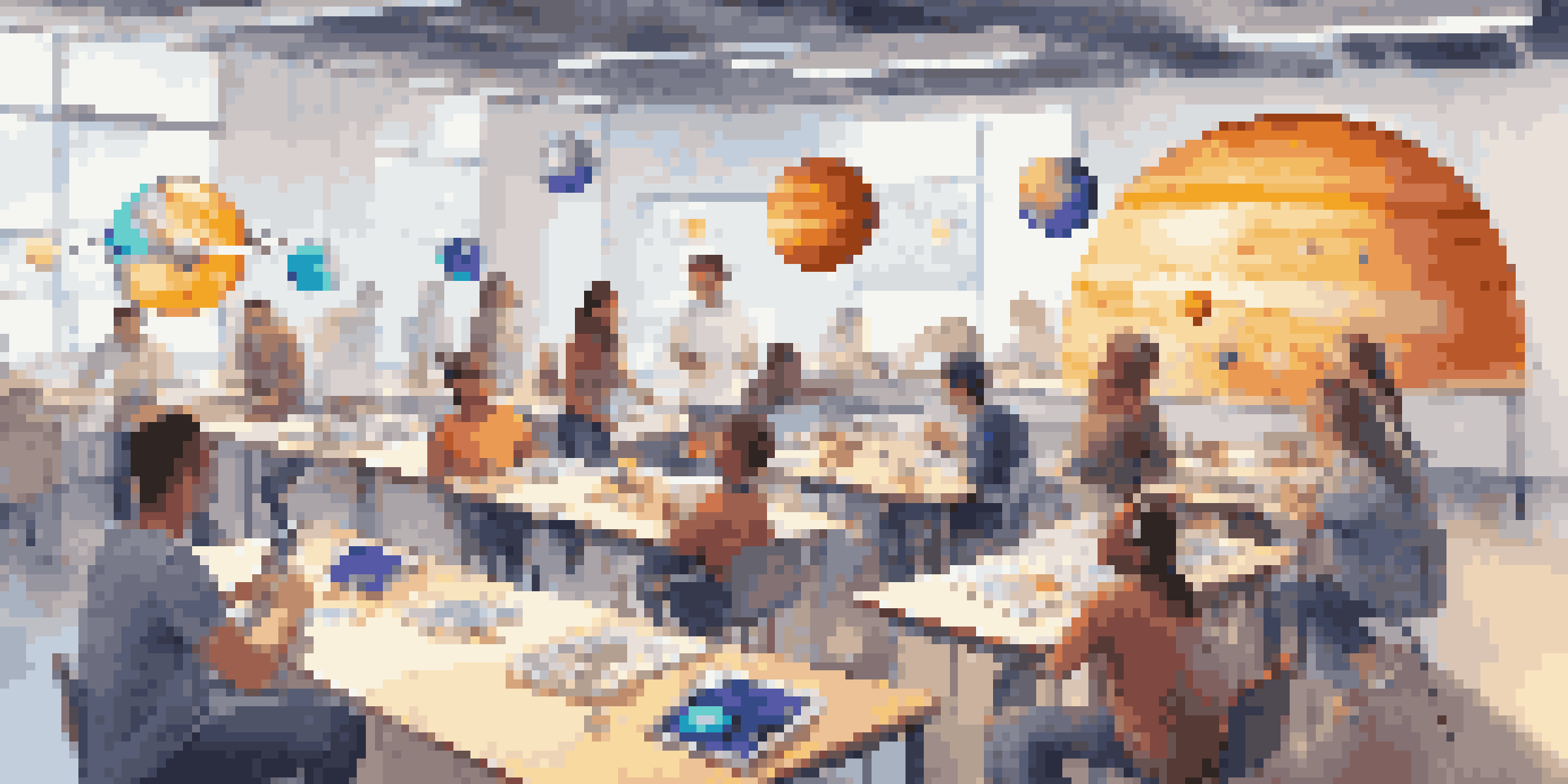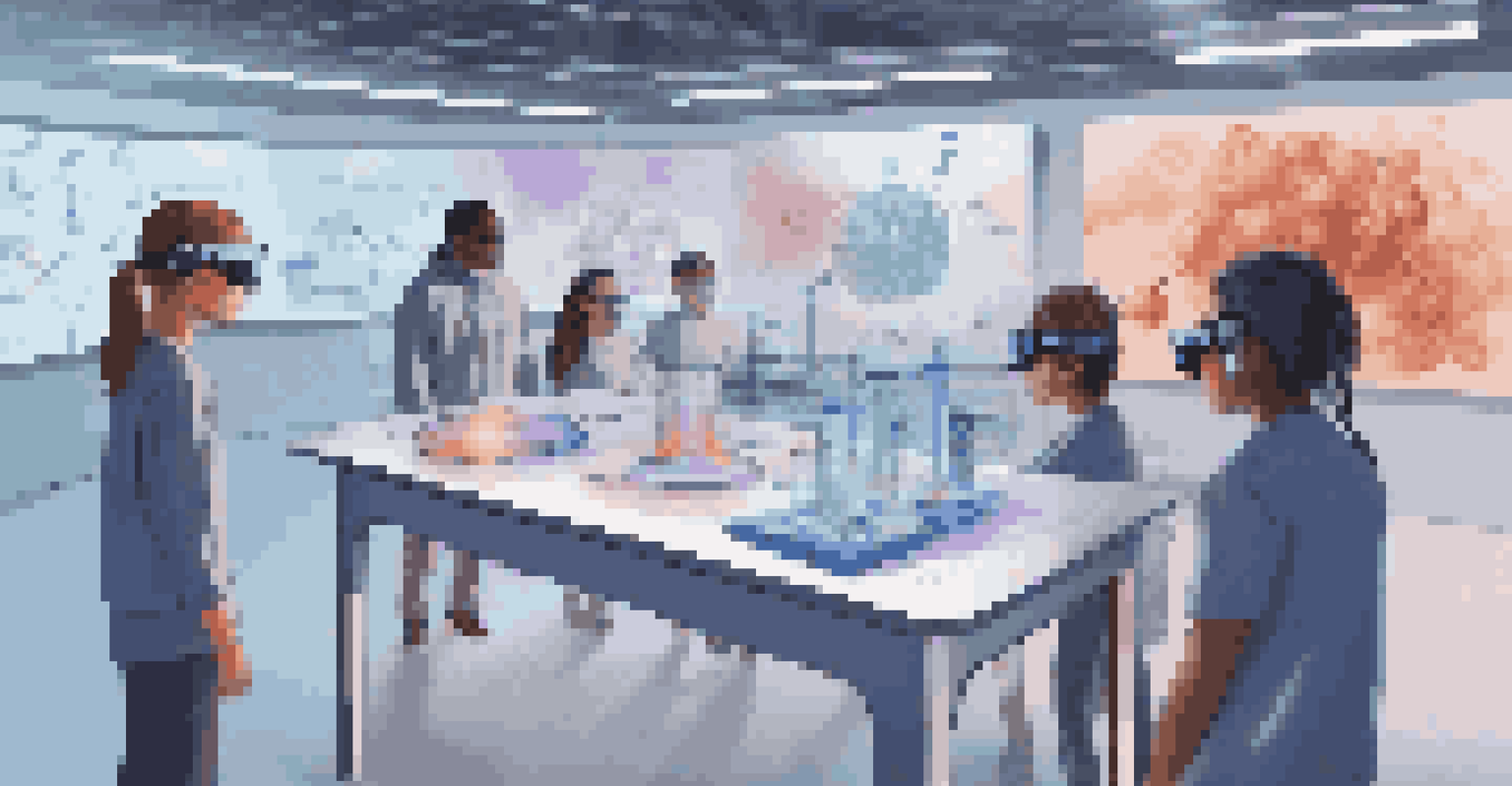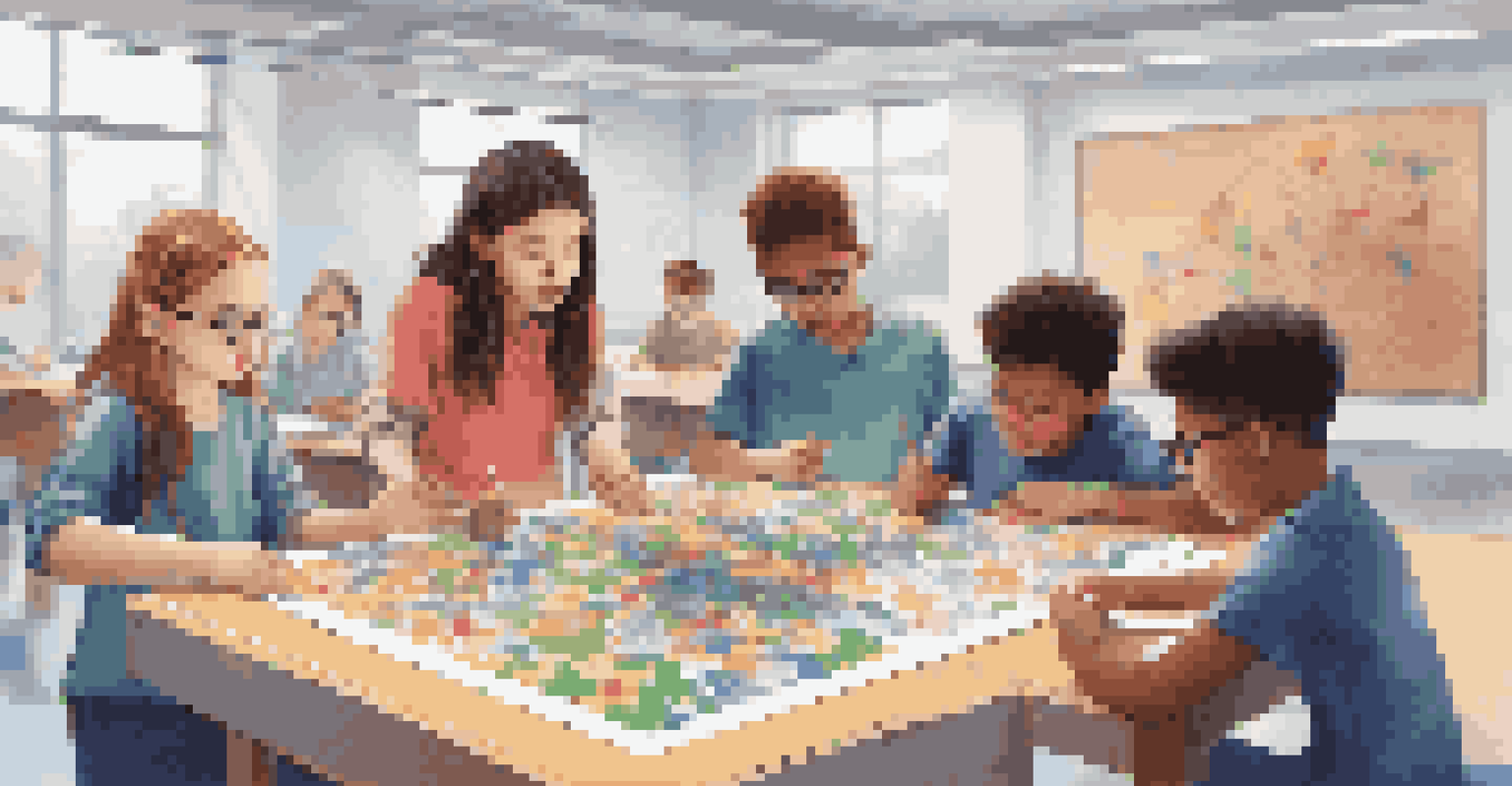The Power of AR in Supporting Collaborative Learning Experiences

Understanding Collaborative Learning in Education
Collaborative learning is a teaching strategy that encourages students to work together to solve problems and complete tasks. This approach not only enhances interpersonal skills but also fosters a deeper understanding of the subject matter. Think of it as a group project where everyone brings their unique perspective to the table, creating a richer learning environment.
Collaboration allows us to know more than we are capable of knowing by ourselves.
In recent years, the need for effective collaborative learning has grown, especially as education continues to evolve. Students are increasingly expected to engage in teamwork, making the ability to collaborate effectively a crucial skill. This necessity creates an opportunity for innovative technologies, like Augmented Reality (AR), to step in and enhance these collaborative experiences.
AR technology overlays digital information onto the real world, making learning more interactive and engaging. By integrating AR into collaborative learning, educators can create immersive experiences that bridge the gap between theory and practice, allowing students to visualize concepts in ways they couldn’t before.
The Role of AR in Enhancing Engagement
One of the standout benefits of AR in collaborative learning is its ability to boost engagement. Traditional education methods can sometimes leave students feeling detached or bored, but AR brings subjects to life in a dynamic way. Imagine students exploring a 3D model of the solar system, where they can interact with planets and moons right in their classroom.

This heightened engagement not only makes learning more enjoyable but also encourages active participation. When students are excited about what they’re learning, they’re more likely to contribute to discussions and work together effectively. AR transforms passive learning into an active, hands-on experience.
AR Boosts Engagement in Learning
Augmented Reality transforms traditional education by creating dynamic and interactive experiences that captivate students' attention.
Moreover, the interactive nature of AR fosters curiosity and exploration among students. As they navigate through AR environments, they not only absorb information but also develop critical thinking skills as they analyze and manipulate virtual objects.
Facilitating Remote Collaboration with AR
In today's digital age, remote collaboration has become more common yet also more challenging. AR serves as a bridge, connecting students from different locations in a shared, interactive space. Imagine a group of students in various cities collaborating on a science project by viewing and interacting with the same AR model, regardless of their physical distance.
Technology is best when it brings people together.
This technology enables real-time communication and collaboration, allowing students to see each other's contributions as they work together. They can share insights, brainstorm ideas, and problem-solve collectively, all while feeling like they’re in the same room. It’s an opportunity to break down geographical barriers in education.
Additionally, AR can enrich remote learning by providing tools that simulate hands-on experiences. For example, students can conduct virtual lab experiments together, which can be particularly beneficial in fields that require practical applications, like science and engineering.
Building Social Skills Through AR Experiences
Collaborative learning is not just about academic achievement; it also plays a vital role in developing social skills. AR can enhance these experiences by creating scenarios where students must communicate, negotiate, and collaborate effectively. Picture students working together to solve a puzzle in an augmented environment, requiring them to discuss strategies and share ideas.
These interactions help students build essential communication skills that are crucial in both academic and professional settings. They learn to express their thoughts clearly, listen actively, and appreciate differing viewpoints. This social aspect of learning is where AR truly shines.
Facilitates Remote Collaboration
AR bridges geographical gaps, allowing students to collaborate in real-time on projects, enhancing their teamwork and communication skills.
Furthermore, as students navigate challenges together in an AR setting, they also learn about teamwork and conflict resolution. These experiences translate well into real-world situations, equipping them with skills that extend beyond the classroom.
Personalizing Learning with AR Technology
AR allows for a more personalized learning experience, catering to diverse learning styles and paces. In a collaborative setting, students can engage with content that resonates with them individually, while still working together as a group. For example, some learners may thrive in visual environments, while others benefit from hands-on interactions.
This adaptability ensures that all students can contribute their strengths to the group. AR can present information in various formats, allowing students to choose the method that best suits their learning style. This way, they can collaborate more effectively and engage with the material on a deeper level.
Moreover, personalized learning through AR can also help identify and address individual learning gaps. Teachers can track student progress in real-time, offering support where needed and fostering a more inclusive learning environment.
AR as a Tool for Educators in Collaborative Learning
Educators play a pivotal role in harnessing AR technology to facilitate collaborative learning. By integrating AR into their teaching strategies, they can create immersive and interactive lessons that capture students' attention. Think of AR as a new set of tools in an educator’s toolkit, ready to enhance traditional teaching methods.
Teachers can design group activities that utilize AR to make lessons more dynamic, encouraging students to engage with the content collaboratively. This shift not only enriches the learning experience but also empowers educators to foster a more student-centered approach in the classroom.
Personalized Learning Experiences
With AR, learning can be tailored to individual styles and paces, fostering a more inclusive environment where all students can thrive.
Additionally, AR can provide educators with valuable insights into student collaboration patterns and engagement levels. With this data, teachers can refine their strategies and offer targeted support, ultimately leading to a more effective collaborative learning environment.
The Future of Collaborative Learning with AR
As technology continues to advance, the future of collaborative learning with AR looks promising. We can expect to see more innovative applications that further enhance the educational experience. For instance, future AR tools may incorporate artificial intelligence to tailor learning experiences even more specifically to individual and group needs.
Moreover, as more educational institutions adopt AR technology, we may witness a cultural shift in how collaboration is perceived in learning. Instead of viewing collaboration as an occasional group project, it could become a fundamental aspect of the learning process, seamlessly integrated into curricula.

Ultimately, AR has the potential to redefine collaborative learning, making it more engaging, inclusive, and effective. As we embrace this technology, the possibilities for enhancing educational experiences are limitless.